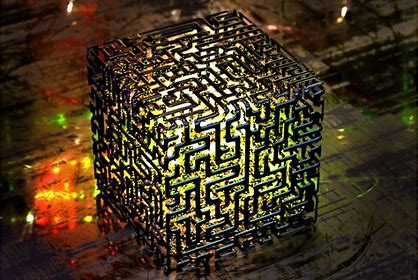Quantum dots and ultra-fast laser impulses are the tools for next-generation quantum computing. The ultra-fast attosecond lasers can act as ultra-accurate scanner systems. The fast laser flashes can scan structures. That is invisible to scanning tunneling microscopes. But the attosecond lasers can also drive information to the qubits.
In some ideas, the system that is similar to a scanning tunneling microscope forms a structure that looks like a scanning tunneling microscope. The styluses that hover electrons between the layer and stylus are in comb-like structures. The attosecond lasers will transport information into those electrons, that act as transporter dipoles for the information. When laser ray hits electrons. They resend that radiation in the form of photons.
If the system uses excitons for data transmission the series of fullerene molecules can used to protect the exciton chain. Information travels between those quantum lanterns. Those quantum lantern chains can be in lines and rows. And information can travel vertically and horizontally.
The thing is that quantum computers are looking for their form. Those systems are becoming more and more advanced. And they learn to drive more and more complicated data structures.
"Photoinduced bipolaron-to-polaron formations distorting a quasi-1D lattice of atoms play a major role in the formation of the pseudogap. Credit: Steven Burrows/Murnane and Kapteyn Groups" (ScitechDaily, Ultrafast Laser Pulses Unmask Quantum Materials and Superconductivity)
"Illustration showing light exciting electrons in two molecules of the organic semiconductor known as buckminsterfullerene. The newly formed exciton (shown by the bright dot) is first distributed over two molecules before it settles on one molecule (shown on the right in the picture). Credit: Andreas Windischbacher" (ScitechDaily, Quantum Leap: Pioneering Exciton Imaging Transforms Semiconductor Science)
"Waterloo researchers merge Nobel-prize winning physics and chemistry to enhance quantum communication efficiency and security. Credit: SciTechDaily.com" (Quantum Dots Ignite a New Era in Global Secure Communication)
In some models, the Hall-effect fields or resistance fields can used as qubits. The idea is that the system drives information to those standing waves around those wires. The blue lines in the upper image can portray those fields. Then the photons drive information to those fields. Then the system puts similar Hall fields that are at lower energy levels opposite to those fields. Then the higher energy field can transmit information between those energy fields.
"The entangled photon source, an indium-based quantum dot embedded in a semiconductor nanowire (left), and a visualization of how the entangled photons are efficiently extracted from the nanowire. Credit: University of Waterloo" (Quantum Dots Ignite a New Era in Global Secure Communication)
Quantum dots make the next-generation ultra-secure data transmission possible.
The next-generation quantum technology that uses so-called quantum dots and indium nanowires are the tools for high-power quantum networks. The system can put quantum dots inside the nanotube, and those dots can make it possible for an entangled photon chain can transport information in that nanotube.
This is one of the most secure information transportation methods. If somebody tries to steal information that thing cuts the chain of those entangled photons. And the system detects the attack immediately.
The main problem with quantum data transportation is: how to get information from the qubit into the wire. Quantum networks are more secure than regular networks because information travels in physical structures. It's also possible that the quantum network uses regular optical cables, where each wire is a qubit's independent state. The system can share the data between those wires. And then that thing makes it hard to break the protection.
https://scitechdaily.com/quantum-dots-ignite-a-new-era-in-global-secure-communication/
https://scitechdaily.com/quantum-leap-pioneering-exciton-imaging-transforms-semiconductor-science/
https://scitechdaily.com/ultrafast-laser-pulses-unmask-quantum-materials-and-superconductivity/





Comments
Post a Comment